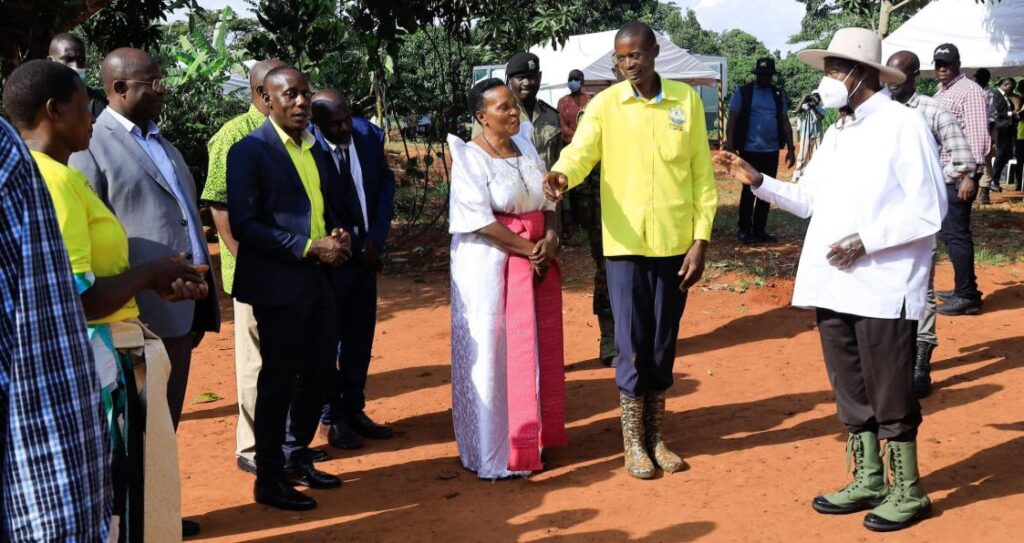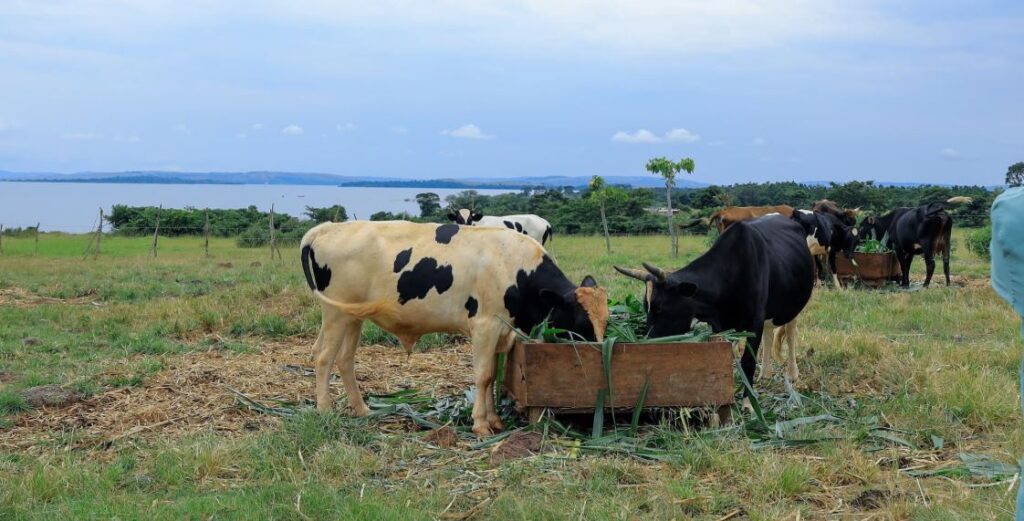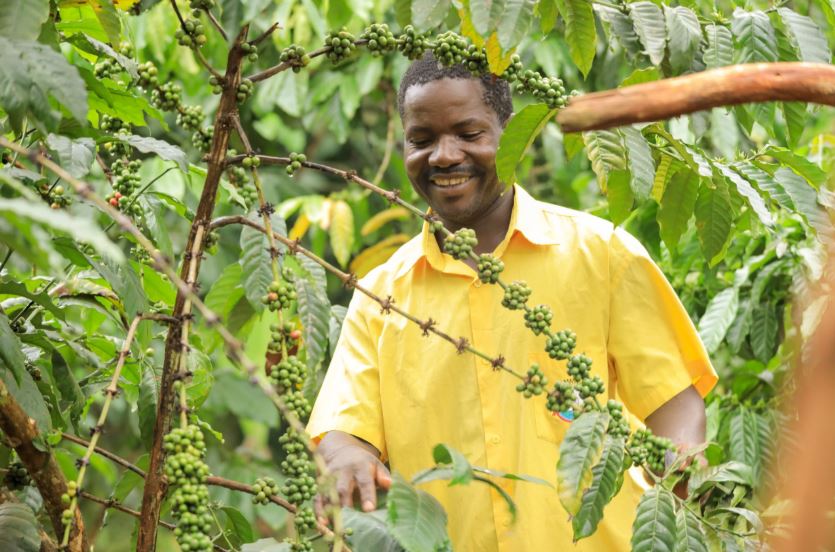
In a powerful testament to the transformative potential of grassroots economic empowerment, President Yoweri Kaguta Museveni this week concluded his Parish Development Model (PDM) Zonal Tours in the Greater Mukono sub-region, including the remote Buvuma Island.
His visits highlighted inspiring stories of farmers who have leveraged PDM funds to achieve remarkable socio-economic transformation, directly echoing the impactful work championed by initiatives like Stanbic Bank’s Women, Youth, and Farmers (WYF) Agenda.
During his tour, President Museveni met with outstanding beneficiaries who have embraced the government’s message of wealth creation and transformed their livelihoods.
On Buvuma Island, he lauded Edward Mubiru, a former fisherman who, with the support of PDM funds, has successfully transitioned into a thriving agricultural entrepreneur.
“I thanked Edward Mubiru for embracing the government’s message on wealth creation and for abandoning the overburdened fishing sector in favour of productive land-based enterprises,” Museveni remarked, noting Mubiru’s expansion into lucrative coffee and dairy farming.
Another model farmer in Buvuma, Muhereza Wako, demonstrated the power of intensive farming, growing a thriving dairy business on just half an acre while also venturing into coffee, bananas, and maize mill processing, all courtesy of PDM support.

These success stories underline the PDM’s core objective: to uplift households from subsistence to the money economy.
Earlier in Mukono district, the President had visited Harriet Nampa, a 37-year-old PDM beneficiary whose initial hesitation about accepting the full UGX 1 million loan turned into a remarkable success story.
Opting for UGX 500,000, her investment blossomed into approximately UGX 4 million through a successful piggery business, which she has since expanded into dairy farming.
“Our decision to provide PDM funding directly to individuals has yielded positive results,” the President affirmed, commending the integrity of local PDM officials. He pledged continued government support to all PDM beneficiaries to foster further growth.

PDM: A Blueprint for Grassroots Transformation
The Parish Development Model is Uganda’s multi-sectoral strategy designed to empower every Ugandan, particularly in rural areas, to actively participate in the monetised economy.
It channels funds directly to the parish level, which is the smallest administrative unit, enabling communities to identify their unique needs and invest in productive ventures.
The model is built on seven pillars, including production, value addition, infrastructure development, market access, and crucial financial inclusion.
By providing affordable credit through PDM SACCOs, it aims to increase household incomes, improve livelihoods, and promote local enterprise growth.
Synergy with Stanbic Bank’s WYF Agenda
The PDM’s success stories in Greater Mukono and Buvuma perfectly align with and amplify the objectives of Stanbic Bank’s proactive Women, Youth, and Farmers (WYF) Agenda.
This flagship initiative by Stanbic Bank Uganda is a powerful testament to how the private sector can partner with government efforts to drive inclusive economic transformation.
Under the WYF agenda, Stanbic Bank has committed a staggering UGX 1 trillion towards agricultural projects undertaken by Women, Youth, and Farmers between now and 2028.
This commitment is not just about providing loans; it’s about unlocking access to affordable credit, building sustainable livelihoods, and fostering economic growth at the grassroots level. Much like the PDM, Stanbic’s WYF Agenda focuses on:
Financial Inclusion
Addressing the critical issue of limited access to finance for these key demographics, ensuring they can invest in and grow their businesses. Stanbic’s provision of affordable credit, often with tailored repayment terms tied to harvest seasons, mirrors the PDM’s approach of making capital accessible.
Capacity Building
Both initiatives recognise the importance of empowering beneficiaries with skills. While PDM has trained AI technicians and extension workers, Stanbic’s agenda includes business training, coaching, and financial literacy programs to equip farmers and entrepreneurs with the knowledge to thrive.
Value Chain Development
The PDM emphasises production, processing, and marketing, and Stanbic complements this by providing financing across the agricultural value chain, from production to processing and export. Their efforts, such as partnerships with entities like the Buganda Kingdom to establish “one-stop centres” for agricultural inputs and advisory services, directly support the PDM’s goal of improving agricultural productivity and market linkages.
Digital Transformation
The government’s digitisation of PDM fund disbursements through platforms like WENDI and ZAIDI aligns seamlessly with Stanbic Bank’s push for digital financial inclusion, offering online account opening and digital loan services, enhancing convenience and transparency for beneficiaries.
President Museveni’s tour thus demonstrated that when targeted government interventions like the PDM are effectively implemented, with dedicated officials and responsive beneficiaries, they can fundamentally alter economic realities.
This impact is further amplified when major financial institutions like Stanbic Bank concurrently pursue initiatives like the WYF Agenda, creating a powerful synergy that accelerates wealth creation, strengthens agricultural value chains, and fosters a more inclusive and prosperous Uganda.
The success stories from Mukono and Buvuma are just the beginning of a nation transforming from the ground up, with collaboration between the public and private sectors paving the way.
